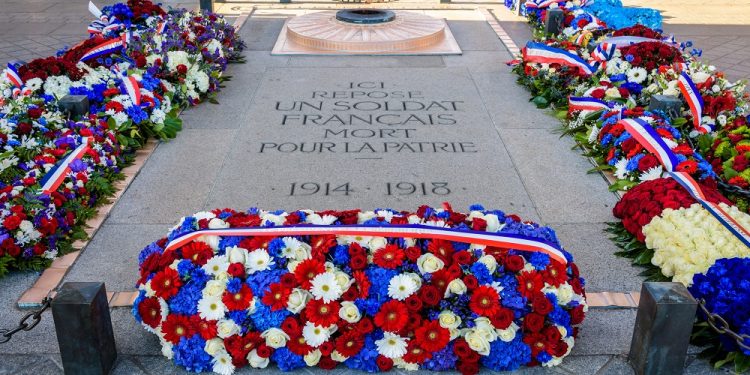
Armistice Day
Each year, on the 11th of November, the world takes a moment to recognize Armistice Day, a poignant mark on the calendar that signifies the end of World War I. It’s a day steeped in solemn history and reflective gratitude—a time when nations pause to honor the valor and sacrifice of those who have served and to hope for continued peace.
Historical Background
Armistice Day traces its origins back to November 11, 1918, when at 11 a.m.—the eleventh hour, of the eleventh day, of the eleventh month—the armistice between the Allies and Germany came into effect, ceasing hostilities on the Western Front and essentially bringing the ‘Great War’ to an end.
The war had raged for more than four years, reshaping borders, societies, and modern warfare itself. The first Armistice Day was observed on November 11, 1919, one year after the ceasefire.
In 1920, the Unknown Warrior was buried in Westminster Abbey in London and the Arc de Triomphe in Paris, symbolizing the multitudes who had died unknown and unclaimed. The day was originally celebrated with parades, public meetings, and a brief suspension of business at 11 a.m.
Interesting Facts
- The original concept for the cessation of hostilities was to ensure the “war to end all wars” would never be repeated, yet history saw a sequel in World War II.
- The armistice initially lasted 36 days and was extended several times until the Treaty of Versailles was signed in June 1919.
- Many countries eventually shifted their remembrance to encompass all veterans and war dead, not just those of WWI. For instance, the United States renamed the holiday Veterans Day in 1954.
- Some countries have specific traditions: In Belgium, the day is also King’s Day, a royal holiday.
Observance and Celebration
Today, Armistice Day is commemorated in various ways around the globe. In many countries, people observe a two-minute silence at 11 a.m. to remember those who died. Here are some common practices:
- Inspired by the poem “In Flanders Fields,” poppies are worn as a symbol of remembrance. The red flower bloomed across some of the worst battlefields, becoming an emblem of the bloodshed during the war.
- Many take time to visit the resting places of fallen soldiers and memorials dedicated to their service.
- Special services are held in churches, war memorials, and military cemeteries. They often include reading the names of the fallen, laying wreaths, and playing “The Last Post” bugle call.
- Schools and historical societies often organize programs to educate the public about the significance of the day and World War I’s impact on the world.
Armistice Day is not just about history; it’s an ongoing reminder of the cost of war and the value of peace. Observing this day can be as personal as a silent prayer or as public as attending city-wide commemorations. However it’s marked, the day offers a powerful connection to a past that still resonates in our present, urging us to remember, reflect, and respect.








